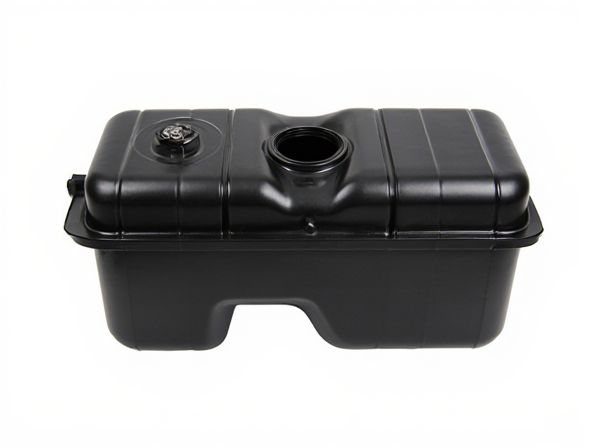
Photo illustration: Sealed Tank vs Vented Tank
A sealed tank maintains pressure by preventing air exchange, which reduces contamination risks and improves system efficiency. Vented tanks allow airflow to equalize pressure but can introduce impurities and require regular maintenance. Your choice depends on the application's need for cleanliness, pressure stability, and maintenance preferences.
Table of Comparison
| Feature | Sealed Fuel Tank | Vented Fuel Tank |
|---|---|---|
| Definition | Closed system with no external air exchange | Allows air to enter and exit freely |
| Emissions | Reduces evaporative emissions | Higher emission potential due to vapor release |
| Pressure Control | Maintains internal pressure with valves | No pressure control, relies on ventilation |
| Fuel Evaporation | Minimized fuel vapor loss | Greater fuel evaporation risk |
| Fuel Contamination | Less exposure to dirt/moisture | Higher contamination risk from outside air |
| Maintenance | Requires monitoring of pressure valves | Simple maintenance but possible clogging of vents |
| Typical Use | Modern vehicles with emission controls | Older vehicles or off-road applications |
Introduction to Sealed and Vented Tanks
Sealed tanks are designed to prevent air exchange and maintain internal pressure, making them ideal for storing volatile or sensitive liquids. Vented tanks allow air to escape or enter, balancing pressure and preventing vacuum formation during fluid transfer or temperature changes. Understanding the differences between sealed and vented tanks is crucial for selecting the appropriate storage solution in industrial applications.
Key Differences Between Sealed and Vented Tanks
Sealed tanks maintain internal pressure by preventing air exchange, ensuring minimal contamination and reducing evaporation, making them ideal for sensitive liquids or hazardous materials. Vented tanks allow air to enter and exit freely, preventing vacuum or pressure buildup but increasing the risk of contamination and evaporation. Key differences include pressure regulation, contamination control, and suitability for various storage environments.
How Sealed Tanks Work
Sealed tanks operate by maintaining a closed environment that prevents air and contaminants from entering, using pressure or vacuum valves to regulate internal pressure changes caused by liquid volume fluctuations. These tanks rely on pressure relief valves or bladder systems to accommodate expansion and contraction without allowing external air ingress, ensuring product integrity and reducing oxidation or contamination risks. This airtight design enhances safety, minimizes evaporation losses, and is ideal for storing volatile or sensitive liquids.
How Vented Tanks Operate
Vented tanks operate by allowing air to enter and exit freely through a vent, preventing pressure buildup inside the tank. This ventilation maintains atmospheric pressure, which helps to avoid tank deformation and facilitates the natural flow of liquids during filling and emptying. These tanks are commonly used in applications where pressure regulation and ease of maintenance are critical.
Pros and Cons of Sealed Tank Systems
Sealed tank systems offer enhanced protection against contamination and evaporation, ensuring the fluid remains clean and stable over time. They reduce the risk of leaks and environmental exposure, promoting a safer and more durable storage solution. However, sealed tanks may experience pressure buildup, requiring carefully designed pressure relief mechanisms to prevent system failure.
Advantages and Drawbacks of Vented Tank Designs
Vented tank designs offer advantages such as pressure equalization with the atmosphere, which prevents vacuum formation and structural stress, enhancing safety and tank longevity. However, these tanks are susceptible to contamination, evaporation losses, and environmental exposure, requiring additional measures like flame arrestors or filters. Maintenance complexity and regulations regarding emissions also present challenges compared to sealed tank systems.
Applications and Uses for Sealed Tanks
Sealed tanks are ideal for applications requiring contamination prevention, such as in pharmaceutical, chemical storage, and food processing industries where product purity is critical. These tanks maintain controlled internal environments, making them suitable for storing volatile or hazardous materials that must remain isolated from external air and moisture. Their airtight design also supports applications involving vacuum or pressure conditions, enhancing safety and functionality in sensitive storage processes.
Common Industries Utilizing Vented Tanks
Vented tanks are widely utilized in the chemical, wastewater treatment, and food and beverage industries due to their ability to handle vapor release and pressure fluctuations safely. These tanks feature vents that prevent vacuum formation and allow gases to escape, essential for processes involving fermentation, aeration, or volatile compounds. Common applications include storing corrosive liquids, managing effluent, and fermenting beverages where pressure equalization is critical to maintaining product integrity.
Maintenance and Safety Considerations
Sealed tanks require less frequent maintenance due to their closed design, reducing contamination risks and preventing the ingress of airborne particles, while vented tanks must be regularly inspected and cleaned to avoid clogs and corrosion caused by exposure to the environment. Safety considerations for sealed tanks include monitoring internal pressure to prevent over-pressurization and ensuring proper venting systems are in place to control vapors safely. Vented tanks pose higher risks of leaks, vapor emissions, and external contamination, necessitating robust safety protocols and compliance with environmental regulations.
Choosing the Right Tank: Sealed vs Vented
Choosing the right tank involves assessing the specific requirements of your application, such as pressure conditions and environmental exposure. Sealed tanks provide airtight containment ideal for preventing contamination and maintaining pressure, while vented tanks allow air exchange to avoid vacuum or pressure build-up in non-pressurized systems. Assessing factors like chemical compatibility, temperature variations, and maintenance needs ensures the optimal selection between sealed and vented tanks for operational efficiency and safety.
 caratoz.com
caratoz.com